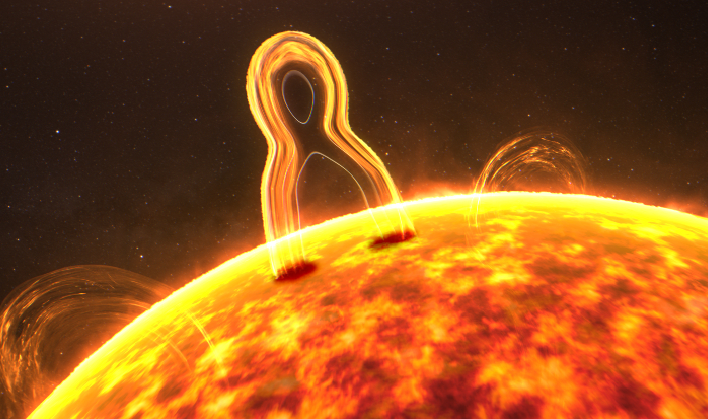NASA Scientists Solve The 60 Year-Old Mystery Of Explosive Solar Flares

To put this in perspective, a flare outburst on the Sun can release enough energy, in a matter of minutes, to power the entire world for 20,000 years. Understanding how the process that causes them, called magnetic reconnection, triggers these solar flares can also provide vital insight into nuclear fusion, as well as improved predictions of particle storms from the Sun that can affect Earth-orbiting technology like satellites. Scientists with NASA's MMS mission think they have come up with a theory that explains why the explosive forces of fast reconnection happen at a consistent speed.
The new theory presented in a paper published in Nature's Communications Physics journal details a magnetic effect that is harnessed in many common devices, such as the sensors that time vehicle anti-lock braking systems, for example.
"We finally understand what makes this type of magnetic reconnection so fast," stated the lead author of the study Yi-Hsin Liu, a physics professor at Dartmouth College in New Hampshire and the deputy-lead of MMS' theory and modeling team. "We now have a theory to explain it fully."
The process of magnetic reconnection occurs in plasma, which is sometimes referred to as the fourth state of matter. As a gas becomes energized enough to break apart atoms, plasma forms leaving a motley of negatively charged electrons and positively charged ions existing beside one another. This fluid-like material is sensitive to magnetic fields.
Plasmas throughout the universe, such as flares from the Sun and black holes, go through magnetic reconnection. Even though there are a few different types of magnetic reconnection, the one that has befuddled scientists the most is a variant called fast reconnection, which occurs at a predictable rate.
"We have known for a while that fast reconnection happens at a certain rate that seems to be pretty constant," remarked Barbara Giles, project scientist for MMS and research scientist at NASA's Goddard Space Flight Center in Greenbelt, Maryland. "But what really drives that rate has been a mystery, until now."
According to NASA, new research indicates fast reconnection occurs specifically in collisionless plasmas, a type of plasma whose particles are spread out enough that the individual particles do not collide with one another. In the areas where reconnection happens in space, the majority of plasma is in this collisionless state, which includes the plasma in solar flares and the areas of space that surround the Earth.
Scientists involved in the research believe fast reconnection is likely sped up by the Hall effect, which describes the interaction between magnetic fields and electric currents. The Hall effect is harnessed in everyday technology, such as vehicle wheel speed sensors and 3D printers, where sensors are used to measure speed, proximity, positioning, or electrical currents.
Ions and electrons stop moving as a group during fast reconnection. As they begin to move around separately, they give rise to the Hall effect, and thus create an unstable energy vacuum where reconnection happens. Pressure from the magnetic fields surrounding the energy vacuum causes the vacuum to implode, and in turn, quickly releases an enormous amount of energy at a very predictable rate.
This new research will be tested in the coming years with MMS, as NASA continues to use four spacecraft flown around Earth in a pyramid formation to study magnetic reconnection in collisionless plasmas.
"Ultimately, if we can understand how magnetic reconnection operates, then we can better predict events that can impact us at Earth, like geomagnetic storms and solar flares," Giles explained. "And if we can understand how reconnection is initiated, it will also help energy research because researchers could better control magnetic fields in fusion devices."
Top Image Courtesy of NASA

